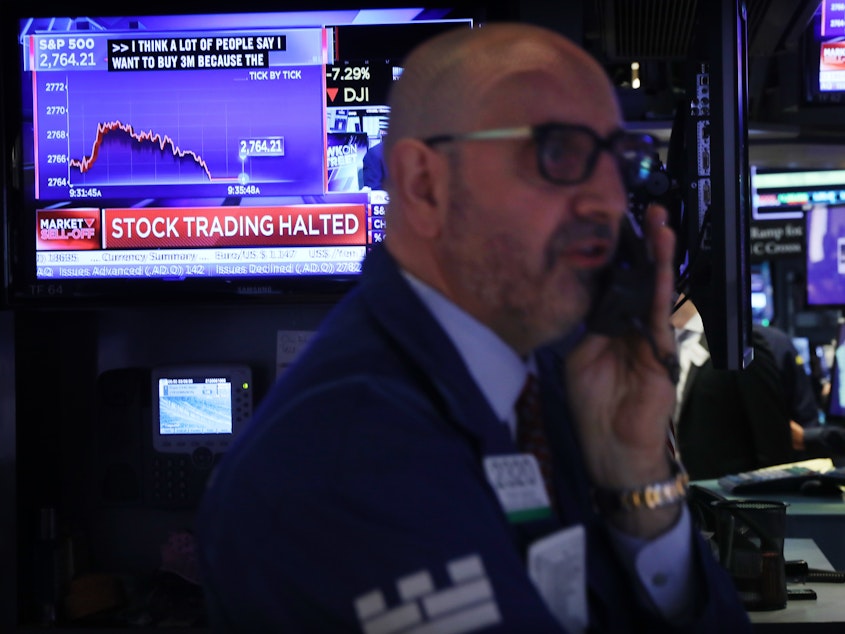How Stock Market Circuit Breakers Work

Six minutes after trading began on the New York Stock Exchange on Monday, it was suddenly halted. That's when the S&P 500 index had plummeted 7% and marketwide circuit breakers kicked in. Trading resumed about 15 minutes later.
The marketwide halt was the first since the stock market crash of Oct. 27, 1997, when the Dow Jones Industrial Average fell 554 points, or 7.2%.
Under market rules, circuit breakers kick in at three thresholds:
Level 1: A drop of 7% from the prior day's closing price of the S&P 500 triggers a 15-minute trading halt. Trading is not halted if the drop occurs at or after 3:25 p.m. ET.
Level 2: A drop of 13% triggers a 15-minute halt. Trading is not halted if the drop occurs at or after 3:25 p.m. ET.
Sponsored
Level 3: A drop of 20% triggers a halt for the rest of the trading day, and trading resumes the following day.
These automatic trading halts are aimed at preventing the market from entering a free fall, and Monday's halt did its job, with the major indexes coming off their lows once trading resumed. However, the indexes fell again later in the day, with the Dow Jones Industrial Average down more than 2,000 points, or nearly 8%.
The circuit breakers "are designed to slow trading down for a few minutes, to give investors the ability to understand what's happening in the market, consume the information and make decisions based on market conditions," New York Stock Exchange President Stacey Cunningham told CNBC.
"It's really a precautionary measure that we put in place so that the market can slow down for a minute," she said.
The circuit breakers were adopted in the wake of the Black Monday crash of Oct. 19, 1987, when the Dow plunged 508 points, or 22%.
Sponsored
"There was this idea that if you stopped trading and gave a pause, then people would calm down and it might stabilize the markets," said Mason Gerety, professor emeritus at Northern Arizona University and a former research economist at the Securities and Exchange Commission.
His research in the early 1990s found a trade-off to the temporary halt. Traders might sell off more quickly if they anticipate a circuit breaker kicking in.
"The fact that there's a circuit breaker might actually be more likely to get you to the circuit breaker. It's kind of almost like a gravitational pull," Gerety said.
"People who do this for a living — I've never met one who felt like they needed to catch their breath," he said. "They have good lungs. They are used to stress." [Copyright 2020 NPR]



